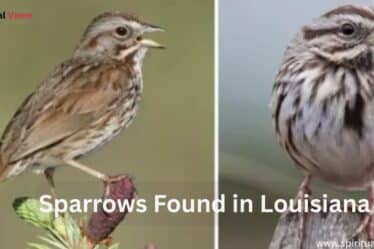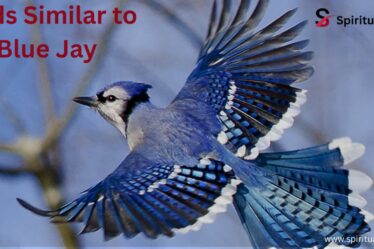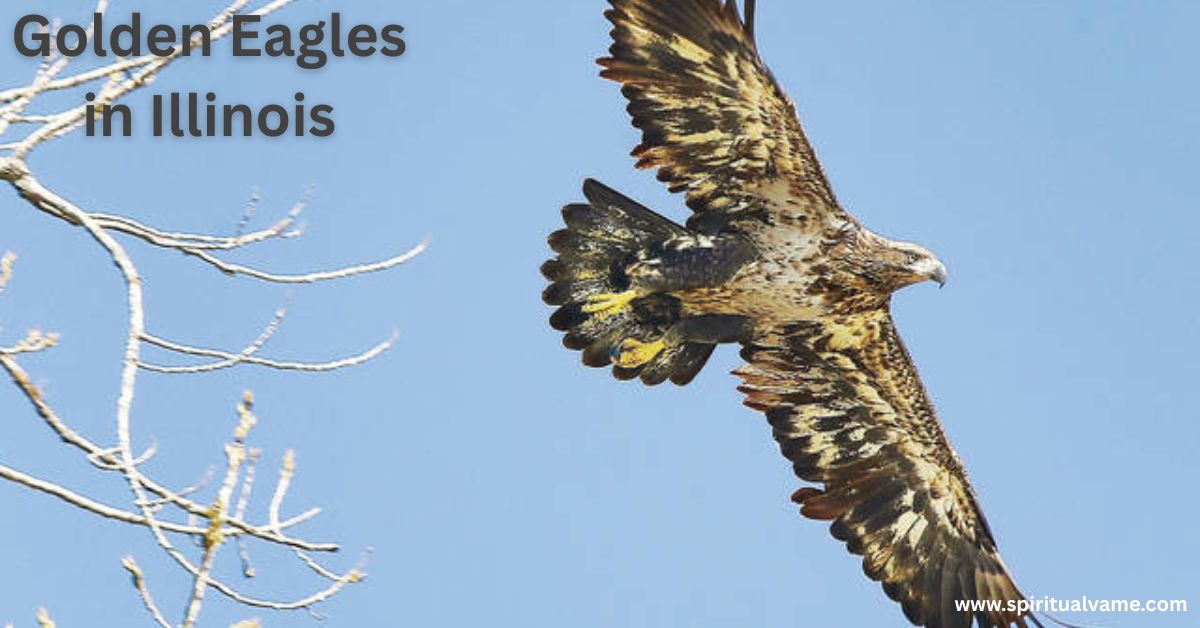
When people think of eagles in Illinois, their minds usually jump straight to the majestic Bald Eagle. But there’s another powerful raptor that visits the Prairie State—one that’s quieter, more elusive, and just as breathtaking. The Golden Eagle is a winter visitor to Illinois, and although harder to spot, it’s well worth the effort. These birds are not just symbols of power and grace; they represent a unique piece of the state’s rich wildlife story. In this article, we’ll dive deep into both the Bald Eagle and the Golden Eagle, their behaviors, habitats, and where you might be lucky enough to see them in the wild.
While both species are protected under the Bald and Golden Eagle Protection Act of 1940, 1962, and 1972, their presence and habits in Illinois differ greatly. The Bald Eagle is more widespread and easier to find, especially in winter. The Golden Eagle, on the other hand, usually shows up in the state’s southern and western areas during colder months. With populations of both birds slowly rebounding after decades of conservation efforts, eagle watching in Illinois is now a favorite wintertime activity for nature lovers and birdwatchers alike.
1. Bald Eagle
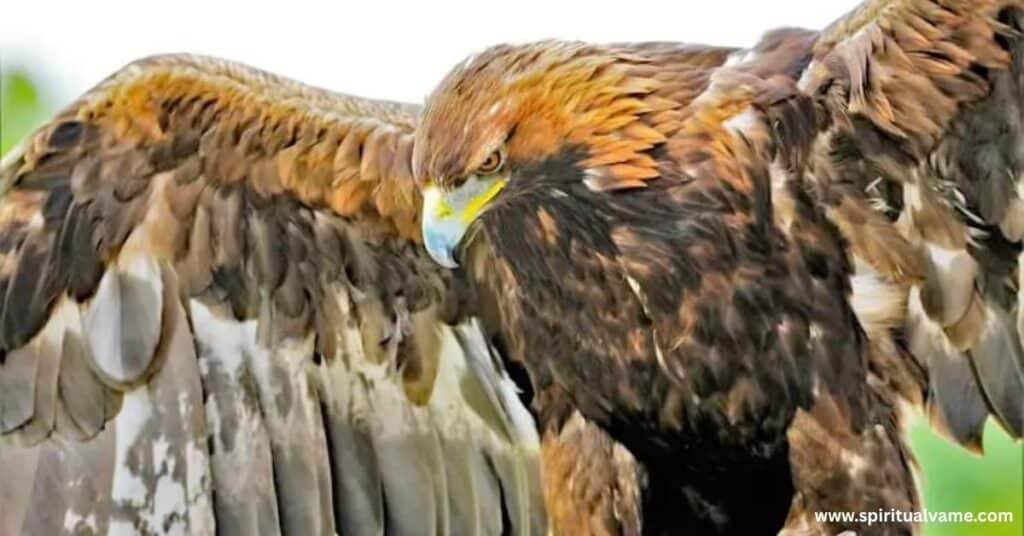
The 🦅 Bald Eagle (Haliaeetus leucocephalus) is not only the national bird of the United States but also a star attraction for bird watchers in Illinois. These striking birds can live up to 20-30 years and measure between 2.5 to 3 feet (or 0.7 to 0.9 meters) in length. Their wingspan can reach an impressive 66 to 96 inches (165 to 244 cm) and they usually weigh around 6.6 to 13.8 lbs (3 to 6.3 kg). Adult Bald Eagles are easy to recognize thanks to their dark brown bodies, white heads and tails, and yellow beaks. Occasionally, you might even see a piebald eagle, which is a rare mix of dark and white feathers. These birds usually become sexually mature around 4 to 5 years of age and often mate for life.
Nesting
During the breeding season, which starts around February and peaks by mid-April, Bald Eagles build large nests in tall trees near water bodies. These nests are usually made of a mound of sticks, mixed with grasses, mosses, feathers, and even odd materials like cigarette filters. Both the male and female help construct the nest, and many pairs reuse their nests year after year, adding new material each time. These nests can become enormous, sometimes measuring over six feet wide and weighing hundreds of pounds. The courtship of these birds is also spectacular. They perform amazing aerial acrobatics like locking talons and spinning in a free fall—a breathtaking display of trust and strength.
Diet
As opportunistic carnivores, Bald Eagles eat mostly fish, which make up about 56% of their diet. They also hunt birds (28%), mammals (14%), and occasionally feed on scavenged prey (2%). Their sharp vision allows them to spot prey from hundreds of feet in the air, even detecting ultraviolet light, and their sharp talons can snatch fish right out of the water. Common meals include grebes, mallards, coots, and over 100 species of fish. They’re also known to steal food from other birds, especially ospreys, and can fly at speeds up to 100 mph when diving.
Conservation
Once facing extinction due to DDT, which caused their egg shells to thin and crack, the Bald Eagle has made a strong comeback. Thanks to legal protections like the Migratory Bird Treaty of 1819 and the Bald and Golden Eagle Protection Act, the eagle population in Illinois is thriving. Today, the state is home to over 3,100 Bald Eagles in winter and around 412 nesting pairs. Historically, over 70,000 individuals were shot, but public education and strong enforcement helped reverse this trend. Illinois celebrates this success with events like Illinois Eagle Day on the fourth Saturday in January, where two million wildlife watchers participate in viewing and learning about this iconic bird.
Where to look for them
Top spots to see Bald Eagles in Illinois include Starved Rock State Park, Matthiessen State Park, and the Plum Island Eagle Sanctuary. These birds often gather near the Illinois River, where open water and rocky cliffs make perfect roosting spots. Other prime areas include Quincy, which hosts the Great River Eagle Days, and towns like Grafton and Alton, where you can even join a Grafton Eagle Tour or visit resorts like Beall Mansion and Eagle Ridge Resort & Spa. Peak viewing is from December through March, when cold temperatures push the birds south from Minnesota, Wisconsin, and Canada.
2. Golden Eagle
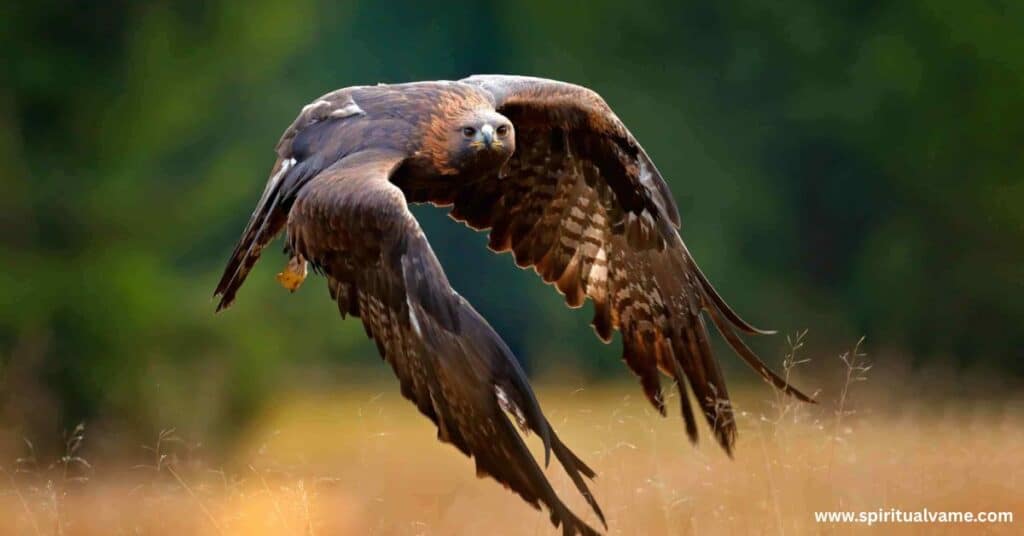
The 🦅 Golden Eagle (Aquila chrysaetos) is a powerful and agile predator that stands apart from its bald cousin. With a wingspan of 70 to 90 inches (180 to 230 cm) and a weight of 6.4 to 13.2 lbs (2.9 to 6 kg), these birds can live up to 30 years in the wild. Their feathers are a deep dark goldish-brown, with a slight golden sheen on their necks, and their legs are fully feathered. Unlike Bald Eagles, Golden Eagles prefer wide open spaces like grasslands, steppes, and mountainous areas. They are seen as symbols of strength and courage by many Native American groups, and their feathers are still highly respected in sacred ceremonies and dances today.
Nesting
In Illinois, Golden Eagles don’t typically breed but pass through during winter months. Nesting usually takes place in the western U.S., where they build large nests on cliffs using sticks, soft grasses, and natural earth materials like clumps of dirt or rocks. A pair will often mate for life and return to the same nest year after year. During April, they lay their eggs, and both parents help care for the young. Since they don’t nest in Illinois, spotting one is a special treat, mainly possible during the colder months as they migrate across the state.
Diet
The Golden Eagle is a fierce hunter with a success rate of about 20%. It mostly eats small mammals like rabbits, hares, prairie dogs, marmots, and ground squirrels. These birds are skilled at using the weather and wind conditions to their advantage, often soaring silently before dropping onto prey with lightning speed. They hunt over grasslands, open fields, and upland prairies, sometimes perched on fence posts or cliffs to get a better view. Unlike scavenging Bald Eagles, Goldens prefer to catch their food fresh, which makes them fascinating to observe.
Conservation
Although they are also listed as Least Concern, Golden Eagles face several modern threats. Wind turbines, habitat destruction, and lead poisoning from bullet fragments in carcasses all play a role in reducing their numbers. Today, there are only about 30,000 individuals across the Northern Hemisphere, including America, Europe, and Asia. In Illinois, efforts like the Golden Eagle Survey—with over 200 volunteers and 92 routes—track sightings to help researchers understand their migration patterns and protect their habitats. The Driftless Area in the Midwest, filled with goat prairies and upland prairies, provides important wintering grounds.
Where to look for them
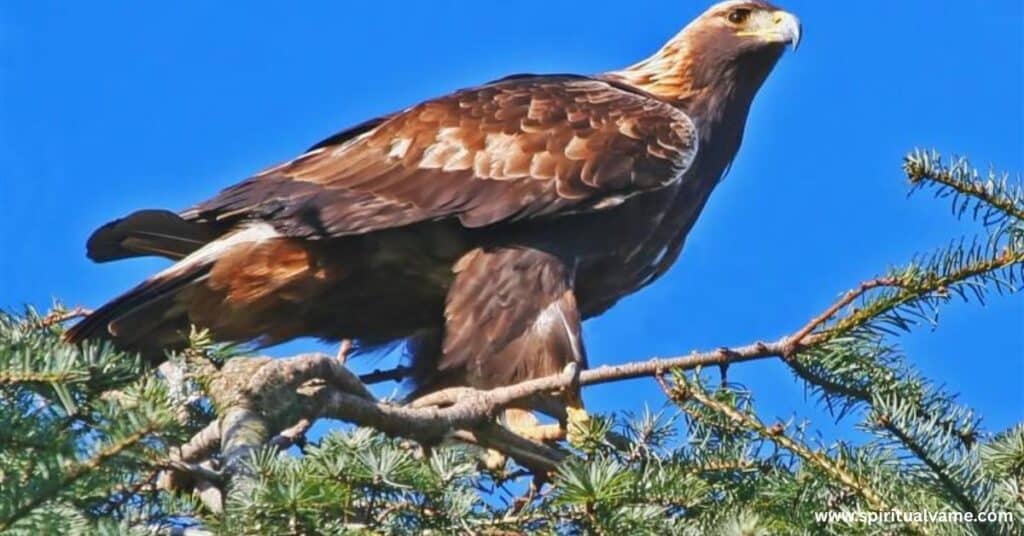
If you’re hoping to spot a Golden Eagle in Illinois, head south. Locations like Shawnee National Forest, Union County Refuge near Jonesboro, and Mississippi Palisades State Park offer the best chances during November through March. These birds like isolated areas with cliffs or open spaces where they can glide with ease. You might catch a glimpse perched on a rocky outcrop or silently scanning the horizon from a tree. Patience is key—but the reward is unforgettable.
Conclusion
Eagles are more than just birds—they’re symbols of freedom, spirit, and natural strength. While the Bald Eagle proudly calls Illinois home for much of the year, the quieter and rarer Golden Eagle offers a unique chance for those willing to look a little harder. Thanks to conservation laws, better public education, and ongoing research, both species are making a comeback. If you find yourself near the Illinois River or deep in the Shawnee Forest, keep your eyes on the sky. With a bit of luck, you could witness one of these magnificent raptors soaring high above the Prairie State.

